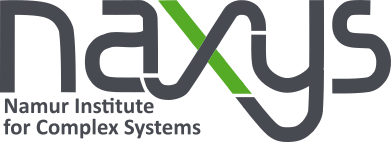
- This event has passed.
Benedetta Franceschiello (University of Lausanne, Switzerland)
November 19, 2020 @ 13:00 - 14:00
Title: MIME – Magnetic resonance Imaging of the Moving Eye
Abstract: Vision is arguably the most important of our senses and it relies on the synchronous functioning of the eyes and the brain. These organs are highly interdependent: pathologies of the eyes can impact brain functionality [1], and brain impairments affect how the visual information is encoded at the eye-level [2], [3]. While nowadays ophthalmic biomedical devices are able to extract high-resolution anatomical measurements and behavioral measurements of the eyes, no technology is able to perform anatomical assessments of the eye while it moves, yet eye-movements are a behavioral readout encompassing valuable biomarkers in brain disorders [4], [5]. Magnetic Resonance Imaging (MRI) is a particularly promising non-invasive and versatile technique because it provides measurements related both to the tissue/organ structure and to the regional neural activity. However, the image artefacts arising from eye motion prevent the applicability of MR techniques to eye imaging, therefore impeding the investigation of the interplay between anatomical structures and their motion.
In this talk I will present our patented structural MRI protocol [6], [7] that allows dynamic acquisitions of the eye while it moves during quasi-naturalistic vision. To test the efficacy of this method, eye-movements and eye-axial lengths – as extracted from the MR images – were compared with eye-tracker measurements and optical biometry, respectively. This new non-invasive technology can estimate the rotation axes from the MR images with up to 97% accuracy with respect to the eye-tracker hardware. The high-resolution MRI scans of the human eye (1 mm3) – acquired during natural movement – permit to quantify the optical axial length with an accuracy having the same order of magnitude of the one obtained with ocular biometry. Finally, I will discuss the possible applications of this technique and the new frontiers it opens both in the field of ophthalmic MRI and vision neuroscience.
[1] Zheng, D. D. et al. Longitudinal Associations Between Visual Impairment and Cognitive Functioning. JAMA Ophthalmol. 136, 989 (2018).
[2] Ciuffreda, K. J. et al. Occurrence of oculomotor dysfunctions in acquired brain injury: A retrospective analysis. Optom. – J. Am. Optom. Assoc. 78, 155–161 (2007).
[3] DeBuc, D. C. et al. Seeing the Brain Through the Eye: What Is Next for Neuroimaging and Neurology Applications. in OCT and Imaging in Central Nervous System Diseases 55–82 (Springer International Publishing, 2020). doi: 10.1007/978-3-030-26269-3_5
[4] MacAskill, M. R. & Anderson, T. J. Eye movements in neurodegenerative diseases. Curr. Opin. Neurol. 29, 61–68 (2016).
[5] Anderson, T. J. & MacAskill, M. R. Eye movements in patients with neurodegenerative disorders. Nat. Rev. Neurol. 9, 74–85 (2013).
[6] Franceschiello, B. et al. 3-Dimensional magnetic resonance imaging of the freely moving human eye. Prog. Neurobiol. 101885 (2020). doi:10.1016/j.pneurobio.2020.101885
[7] Franceschiello, B. et al. WO2020178397 – Magnetic Resonance Imaging Methods and device. (2020). Available at: https://patentscope.wipo.int/search/en/detail.jsf?docId=WO2020178397&tab=PCTBIBLIO.
Benedetta Franceschiello
Laboratory for Investigative Neurophysiology,
Ophthalmology Department, Fondation Asile des aveugles, Lausanne, Switzerland
Radiology Department, University Hospital Center and University of Lausanne, Switzerland
Link to the teams group “naXys Seminars” (unamur members) here
Link to the seminar here

